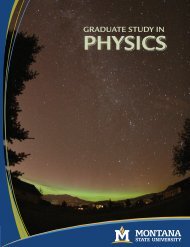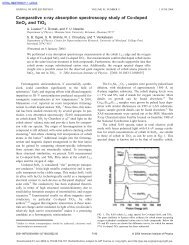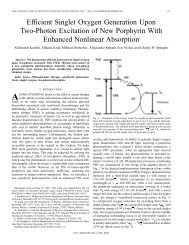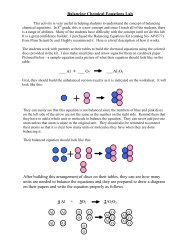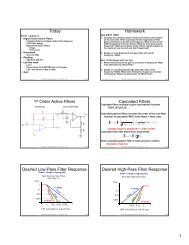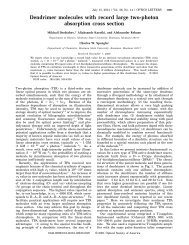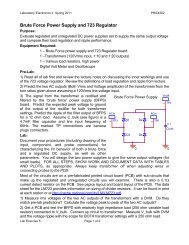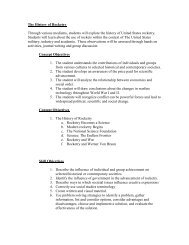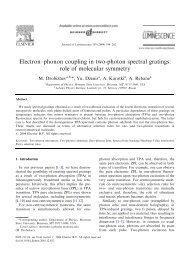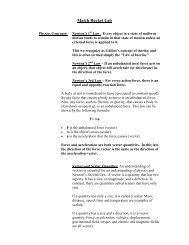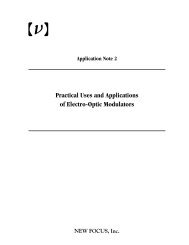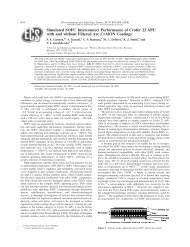Defects in inorganic photorefractive materials and their investigations
Defects in inorganic photorefractive materials and their investigations
Defects in inorganic photorefractive materials and their investigations
Create successful ePaper yourself
Turn your PDF publications into a flip-book with our unique Google optimized e-Paper software.
34 B. Briat et al.<br />
7.6 Bismuth tellurite Bi 2 TeO 5 (CaF 2 -based lattice)<br />
At high write beam <strong>in</strong>tensities, this relatively new material is announced to<br />
be competitive for data storage with the known best <strong>materials</strong> (LiNbO 3 :Fe or<br />
BaTiO 3 ), with the advantage of the self-fix<strong>in</strong>g of volume holograms [203, 204,<br />
205].<br />
Bi 2 TeO 5 crystallizes <strong>in</strong> an orthorhombic structure with a large number<br />
(∼ 17%) of structural oxygen vacancies to compensate for the negative charge<br />
of the Bi 3+ ions with respect to Te 4+ . It is an <strong>in</strong>terest<strong>in</strong>g host for dopants<br />
s<strong>in</strong>ce it has three different cation sites with different co-ord<strong>in</strong>ation spheres,<br />
Bi(1) with 8, Bi(2,3) with 7, <strong>and</strong> Te with 5 oxygens; a good <strong>in</strong>corporation was<br />
observed for Cr, V, Mo, substitut<strong>in</strong>g for Te, <strong>and</strong> rare earth ions substitut<strong>in</strong>g<br />
for Bi [206]. The exposure of Bi 2 TeO 5 :Cr crystals to white light <strong>in</strong>duces photochromism.<br />
The partial transformation of Cr 6+ <strong>in</strong>to Cr 5+ was <strong>in</strong>ferred from<br />
photoabsorption experiments [207] but no EPR result has yet been reported.<br />
8 Hydrogen<br />
Just as the defects treated before, hydrogen is a tool to tailor the <strong>photorefractive</strong><br />
properties of a material as well as to <strong>in</strong>vestigate its properties. This<br />
element is present <strong>in</strong> all compounds conta<strong>in</strong><strong>in</strong>g oxygen as a constituent, with<br />
concentrations rang<strong>in</strong>g from a few ppm up to several percent, after special<br />
treatments depend<strong>in</strong>g on the crystal. The presence of hydrogen is not always<br />
an advantage, for example <strong>in</strong> fibers. Therefore procedures have been <strong>in</strong>vented<br />
to reduce hydrogen, <strong>in</strong> particular for LiNbO 3 [208, 209]. Usually hydrogen is<br />
bonded to an oxygen ion <strong>and</strong> performs a vibration, referred to as OH-stretch<br />
mode, with an energy of about 3200-3700 cm −1 . Detailed spectroscopic data<br />
have been compiled <strong>and</strong> reported recently [210]. Besides basic studies of the<br />
spectroscopic properties of the OH-stretch mode, it served very often as a<br />
tool to <strong>in</strong>vestigate properties of the host. Because of its easy observation by<br />
absorption spectroscopy a qualitative <strong>and</strong> <strong>in</strong> favorable cases even a quantitative<br />
measure of the hydrogen content is possible. Aga<strong>in</strong> LiNbO 3 served as an<br />
example. It is found that the OH absorption is polarized perpendicularly to<br />
the c-axis of LN <strong>in</strong> accordance with the microscopic model of proton <strong>in</strong>corporation<br />
established by ENDOR, see Section 4. An absorption strength per ion<br />
of about 9 × 10 −18 cm was found (for details of the def<strong>in</strong>ition see [211, 212]).<br />
By monitor<strong>in</strong>g the change of the hydrogen isotope concentrations <strong>in</strong> thermal<br />
processes the diffusivity of these isotopes can be determ<strong>in</strong>ed. In the last two<br />
decades strong efforts have been devoted to study the diffusion of hydrogen<br />
isotopes <strong>in</strong> <strong>in</strong>sulat<strong>in</strong>g <strong>materials</strong>, especially <strong>in</strong> oxides, see [213] <strong>and</strong> references<br />
there<strong>in</strong>.<br />
Protons can be <strong>in</strong>volved <strong>in</strong> thermal fix<strong>in</strong>g of holograms (LN, KTN, BSO),<br />
however Buse et al. concluded from spatially resolved optical data especially<br />
for LiNbO 3 that <strong>their</strong> presence is not m<strong>and</strong>atory [214]. Strongly related to



